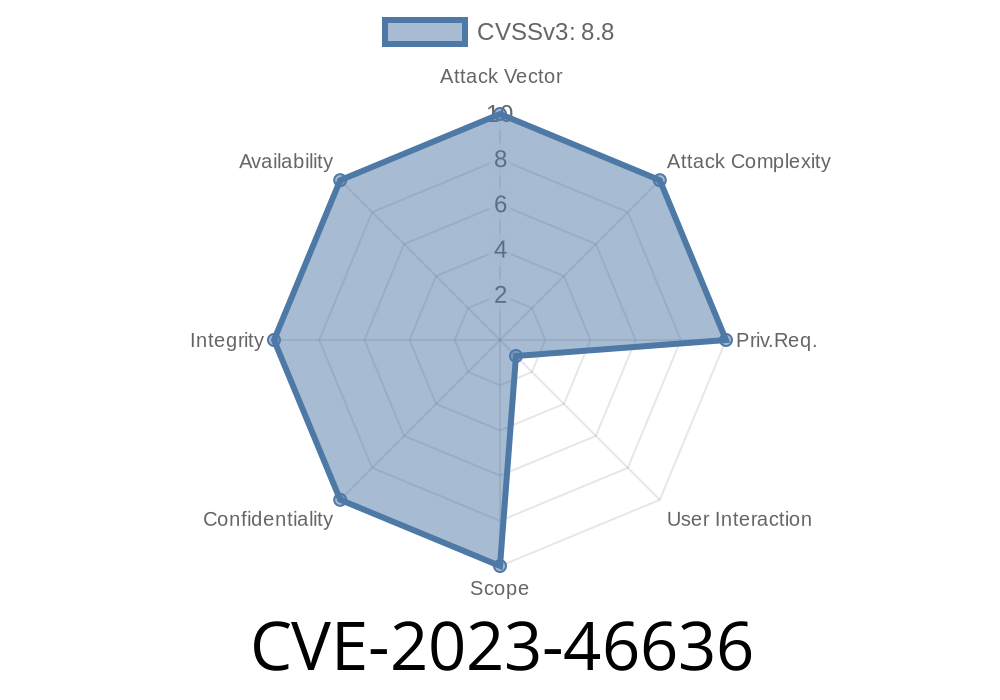In today's increasingly interconnected digital age, security has become a critical concern for website owners and users. As cyber attackers employ more sophisticated techniques to exploit vulnerabilities in web applications, it is essential to stay ahead and protect your web assets.
One such vulnerability, known as Cross-Site Request Forgery (CSRF), allows an attacker to perform unauthorized actions on behalf of another user. In this article, we will discuss a recent CSRF vulnerability uncovered in the David Stöckl Custom Header Images plugin (versions <= 1.2.1) and dive into the technical details of the exploit, including code snippets and links to original references. Stay with us as we shed light on this critical issue and offer solutions for those affected.
Background
The David Stöckl Custom Header Images plugin is a popular WordPress add-on that allows users to customize headers for their site's pages and posts. The vulnerability, identified as CVE-2023-46636, affects plugin versions up to and including 1.2.1. The discovery was made by security researchers and has since been published on the National Vulnerability Database (NVD). For original references and further information, see the following links:
- CVE-2023-46636 – National Vulnerability Database (NVD)
- David Stöckl Custom Header Images Plugin Homepage
Exploit Details
The CSRF vulnerability in the David Stöckl Custom Header Images plugin is primarily due to insufficient security measures in handling user input and requests. This allows attackers to forge requests on behalf of legitimate users and manipulate sensitive data within the WordPress site.
The following code snippet demonstrates a critical aspect of the CSRF vulnerability in the plugin
// Code from custom-header-images.php
if ($_POST['action'] == 'update' && check_admin_referer('custom-header-images')) {
...
}
The issue stems from the plugin's reliance on a single check_admin_referer call to verify the authenticity of the request. Unfortunately, this proves insufficient in ensuring that requests originate from legitimate sources.
By exploiting this loophole, an attacker can craft a malicious request that appears genuine and executes undesirable actions on the victim's WordPress instance. An example of such a malicious request is shown below:
<!-- CSRF malicious request example -->
<form method="POST" action="http://vulnerable.site/wp-admin/options-general.php?page=custom-header-images"; id="csrf_form">
<input type="hidden" name="action" value="update">
<input type="hidden" name="_wpnonce" value="ANY_FAKE_NONCE_VALUE">
...
</form>
<script>
document.getElementById("csrf_form").submit();
</script>
Upon visiting a malicious site or simply by opening an email containing the exploit code, the unwitting user inadvertently triggers the exploit. This carries out actions on behalf of the victim without their knowledge or consent.
Resolution
With CVE-2023-46636 affecting multiple plugin versions, it is crucial for users to take steps to safeguard their sites. The first course of action is to update the David Stöckl Custom Header Images plugin to the latest version. This should address the vulnerability, as the plugin developers work to address the issue.
In addition, implementing a Content Security Policy (CSP) can provide another layer of protection by restricting the sources from which content can be loaded and executed. This can considerably minimize the risk of CSRF and other web-based attacks.
Finally, ensure that your WordPress instance and all associated plugins are up-to-date and diligently monitor your web assets for signs of compromise. By proactively protecting your site and its users, you can better defend against the ever-growing threat of cyberattacks.
Conclusion
Security vulnerabilities, such as the recently discovered CVE-2023-46636, underscore the importance of vigilance and swift action in the digital arena. By staying abreast of emerging threats and continually enhancing your site's security measures, you can protect your web assets and reputation from the severe consequences of cyberattacks. Always remember: when it comes to security, there is no room for complacency.
Timeline
Published on: 11/13/2023 01:15:08 UTC
Last modified on: 11/16/2023 23:43:01 UTC
